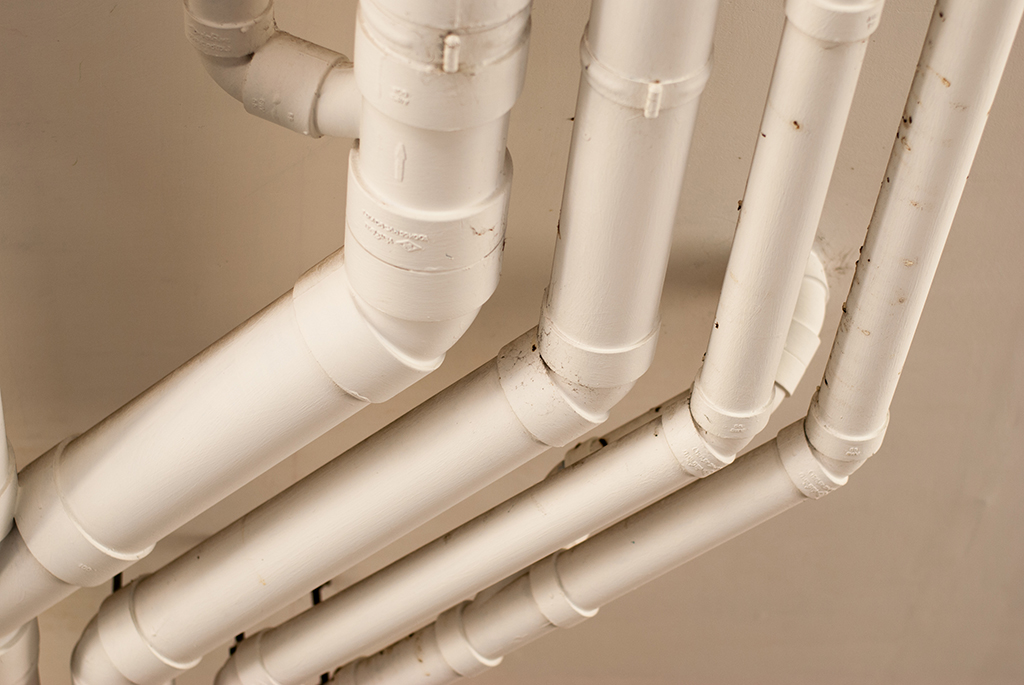Photo By Kritkamol Tanwiboon at Shutterstock
Owning a home comes with a lot of tough responsibilities, but taking care of your plumbing is one of the hardest parts. Not only do you need to educate yourself about the basics of plumbing, but you also need to keep an eye out for problems at your Fernandina, FL, home so you know when it’s time to call a plumber. Simply knowing when parts need to be replaced can go a long way. Here are some basics to help you know when it’s time to replace various plumbing system parts.
Water Lines
Water lines are responsible for carrying fresh water from the city’s water supply (or a well) to all the fixtures in your home. These pipes are generally much smaller than drain lines, plus they’re made of different materials.
In older homes, water lines were typically made of either galvanized steel or copper. Galvanized steel presents several problems, which is why plumbers stopped using it in homes. Copper, on the other hand, is fairly solid but also very expensive. On average, you can expect galvanized pipes to last about 40 to 50 years, while copper water lines can last 70 years or more.
In newer homes, water lines are generally made from a material called PEX. PEX is great for water lines while remaining affordable, making it the top choice for most of today’s plumbers. These PEX water lines may last as long as 100 years, although it’s difficult to say because they haven’t been used for that long.
Drain Lines
Drain lines are the pipes that carry wastewater from your home to the sewers, which is an important job. These drain lines are larger than most water lines, and they face a very different set of problems.
It used to be that drain lines were made of cast iron, which is a sturdy and capable material. However, that cast iron had a lot of problems, including the fact that the inside of these pipes tends to corrode a lot. While cast iron was said to have a 50-year lifespan, it may only last 20 years in some homes.
Nowadays, plumbers use PVC for drain lines because it’s cheaper, easier to work with, and lasts a lot longer than cast iron. Plus, you don’t have to worry about interior corrosion reducing the inside diameter of pipes and leading to more clogs. PVC drain lines are said to have an indefinite lifespan, although they’ve only been in use for about 50 years.
If your drain lines aren’t made of PVC, there’s a good chance it’s time to upgrade them.
Fittings
In order to connect one run of pipe to another, a professional has to use fittings. These fittings can connect two straight pipes, or they can connect two pipes at a 45 or 90 degree angle to change direction. Just like the pipes that they’re attached to, these fittings have a somewhat fixed lifespan.
For the most part, you can expect fittings to last about as long as pipes that are made from the same material. A copper fitting should last about 60 to 70 years, while a PVC fitting has a much longer lifespan since it won’t break down. However, there are some exceptions to this rule.
SharkBite fittings are great for connecting copper water lines when they can’t be soldered together, but they aren’t made to last forever. If a plumber used SharkBite fittings for repairs on your home, you should have them replaced with properly soldered copper fittings in the next 25 years.
Fixtures
The plumbing fixtures in your home, which include things like toilets and faucets, also have a somewhat predictable life expectancy. While a fixture failing generally doesn’t cause as severe of a problem like a burst pipe or corroded drain line, it’s still important to keep an eye on your fixtures so you know when to replace them.
Faucets can last between 15 and 20 years depending on the circumstances. If you have hard water in your home or you don’t use a faucet very often, that lifespan could shorten a bit. However, most plumbers will tell you a faucet lasts a couple of decades.
Toilets, on the other hand, are designed to last up to 50 years. This depends on the type of toilet and what kind of treatment it endures, but you can generally expect a toilet to last at least 30 or 40 years before it’s time for a replacement.
Appliances
The appliances that are connected to your plumbing system also need to be replaced occasionally. While you don’t need to have a plumber inspect these appliances, other parts of your plumbing system could determine how often you need to replace appliances.
Whether you’re talking about a water heater, a dishwasher, or a washing machine, hard water is a huge problem for appliances. Hard water is water that contains a lot of minerals, which means it leaves mineral deposits inside water lines and other crucial parts of appliances. You can tell if you’ve got hard water by looking for premature corrosion around fixtures and mineral deposits left behind on appliances.
If you do have hard water that’s affecting your appliances, you can have a plumber install a water softener. This reduces the mineral content of the water, which means the fixtures and appliances in your home last longer.
Get a Little Help
It’s no secret that taking care of a home’s plumbing is a lot of work, but you don’t have to do everything alone. As a matter of fact, the best thing you can do is find a plumber you can count on in the Fernandina, FL, area. Lucky for you, Bert Norman’s Plumbing has your back. If the appliances, fixtures, or pipes in your home are on their last leg, give us a call and we’ll get everything taken care of before you have to deal with a plumbing catastrophe.

